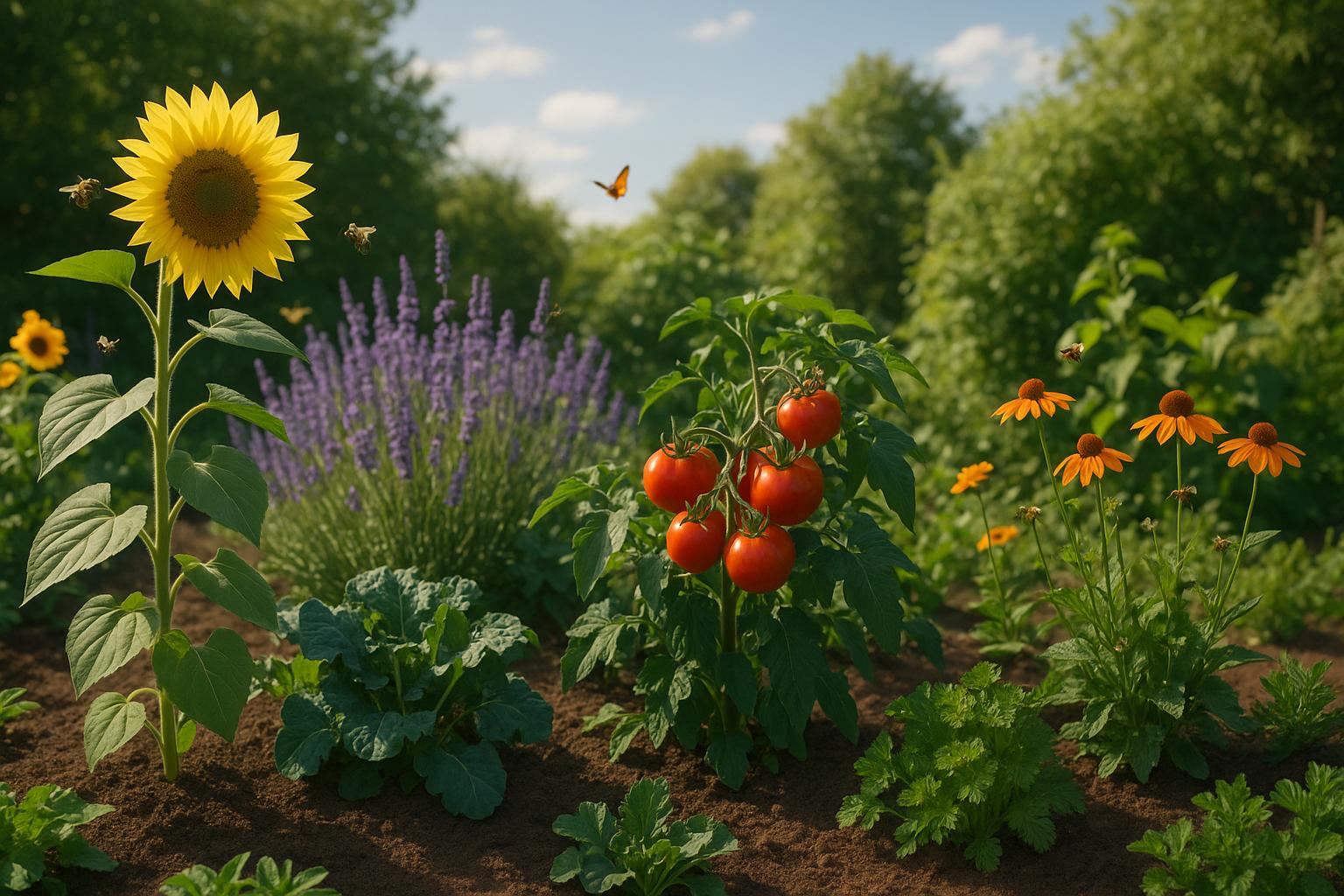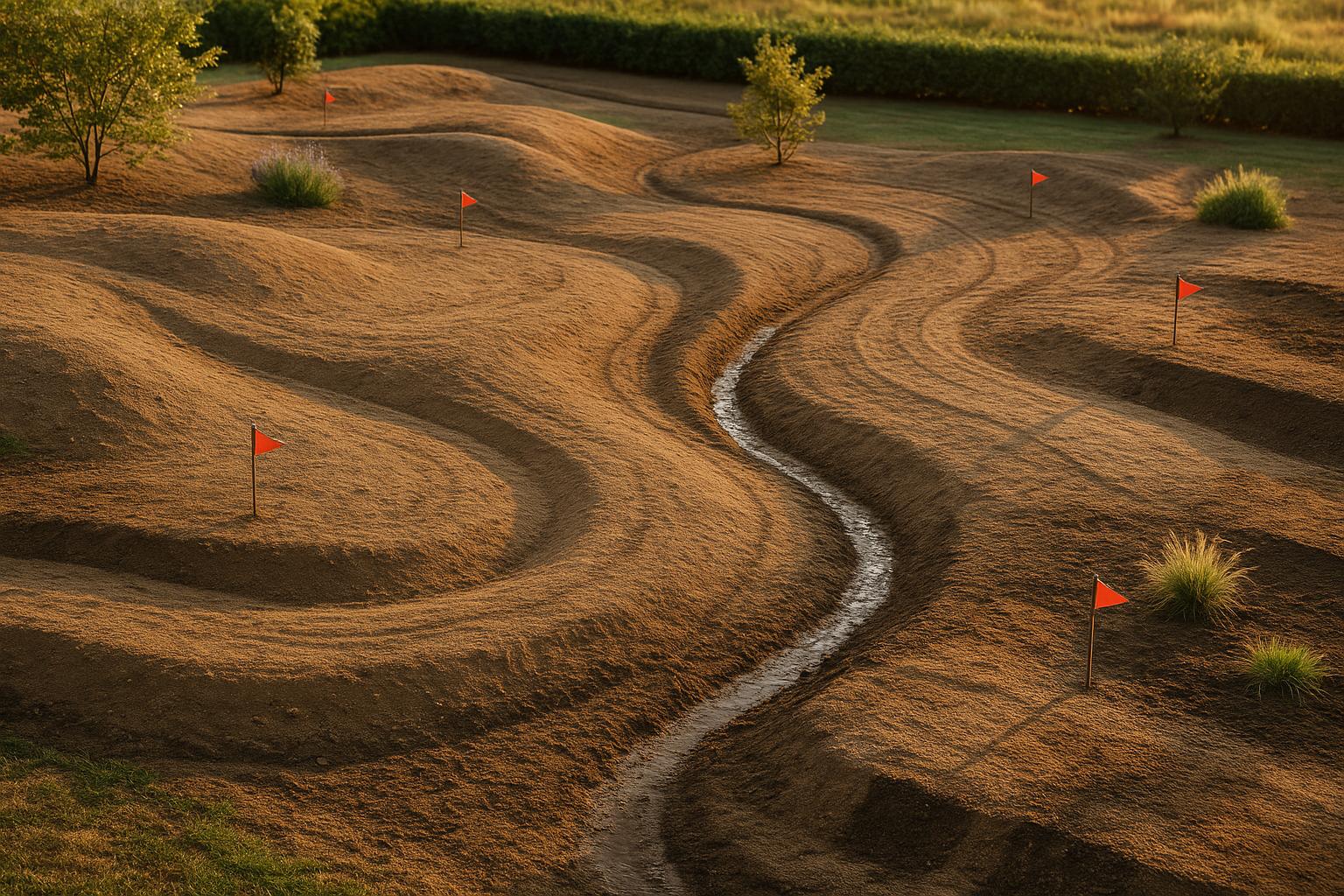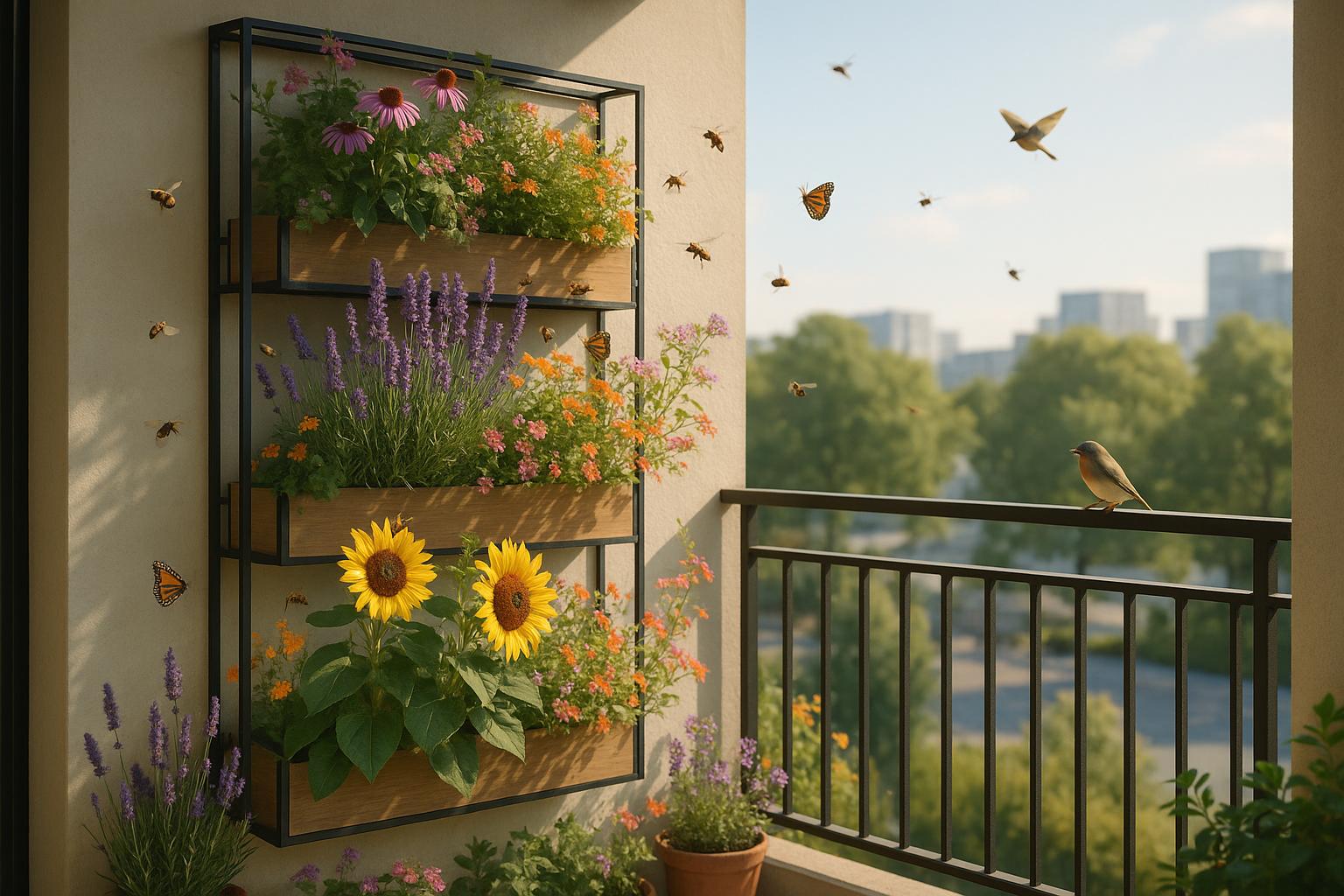Shade creates cooler microclimates by blocking sunlight and reducing surface temperatures by up to 40°C. It also saves energy, cuts water use, and protects your yard. Here's how to get started:
- Analyze Your Yard: Track sun exposure, wind patterns, and hot spots using tools like Sun Surveyor or an infrared thermometer.
- Choose Shade Plants: Pick trees and shrubs suited to your climate, like Palo Verde for dry areas or Southern Live Oak for humid zones.
- Add Structures: Install pergolas, shade sails, or vertical gardens for instant relief. Use reflective materials like white PVC for better cooling.
- Layer Vegetation: Combine trees, shrubs, and ground covers for maximum cooling.
For more tips on maintaining shade plants and structures, check the full article.
Building a Microclimate | Afternoon Shade
How to Check Your Yard for Shade Needs
To make the most of shade in your yard, start by examining three important factors:
Track Sun and Wind Patterns
Map your yard's sun exposure using tools like the Sun Surveyor app, which tracks the sun's path throughout the day. This can help you spot areas that get the most intense afternoon heat [3]. Prefer a hands-on method? Mark shadow patterns at key times - 9 AM, noon, and 3 PM - using chalk or garden stakes [1].
Wind also plays a role. Breezes over 5 mph can reduce the cooling effect of shade by 15-20% [3]. Use ribbon flags to observe airflow, which will help you decide where to place shade features to work with natural air circulation [4].
Find Hot Spots in Your Yard
Different surfaces in your yard can hold heat differently. To identify the hottest areas, use an infrared thermometer during the afternoon (3-5 PM) to measure surface temperatures [3].
| Surface Type | Surface Temperature |
|---|---|
| Bark Mulch | 24.8°C |
| Asphalt | 20.9°C |
| Grass | 11.6°C |
Pay close attention to areas like concrete patios and asphalt driveways, as they tend to trap heat. Where these surfaces meet, you often find the hottest spots, which may need extra shade [3].
Check Soil and Water Flow
Soil and water conditions can influence how well shade features perform. Sandy soil, for example, loses moisture 40% faster, which means you’ll need to carefully plan where to place shade plants [2]. Test the soil with a probe - if it’s tough to penetrate, the area may need improvement before planting [2].
Observe how water flows after rainfall. Placing shade plants uphill from drainage paths can help intercept runoff while also cooling the surrounding air [1][4].
Plants That Create Shade
Best Shade Trees for Your Area
After assessing your yard's sun exposure and soil type (see earlier section), choose trees that thrive in your region. In dry areas like the Southwest, Palo Verde and Desert Willow provide filtered shade while using less water [1]. In the humid Southeast, Southern Live Oak and American Sycamore create dense canopies, cooling surfaces by 25-40°F underneath [3].
| Tree Species | Climate Zone | Annual Growth |
|---|---|---|
| Honey Locust | USDA 4-9 | 2-3 feet |
| Red Maple | USDA 3-9 | 1-2 feet |
| Palo Verde | USDA 8-11 | 2-3 feet |
| Desert Willow | USDA 7-11 | 1-2 feet |
Multi-Level Plant Arrangements
For better temperature control, layer tall trees, medium shrubs, and ground covers. This "thermal sandwich" approach can lower temperatures by 6-10°F more effectively than planting single trees [3][4]. Use the 'drip line + 2 feet' rule to space your plants. For instance, if a Mulberry tree has a 20-foot canopy, place smaller plants 10-15 feet away from its trunk [1].
Food Plants That Give Shade
Why not combine shade with food? Dwarf columnar apple trees grow 8-10 feet tall and provide vertical shade. Grapevines trained on arbors offer excellent overhead coverage while producing 15-30 pounds of fruit annually [2].
For understory plants, Chile Pequin peppers thrive under filtered light from Mesquite trees and yield crops in shaded conditions [1]. These edible options work well alongside shade structures, which we'll cover next.
sbb-itb-1d926cd
Built Structures for Shade
Types of Shade Structures
While plants are excellent for natural cooling, built structures offer instant and customizable shade options. Permanent setups provide consistent temperature control. For example, tensioned shade cloth systems installed at a height of 7-8 feet can reduce patio temperatures by 10-15°F [2].
| Structure Type | Cooling Effect |
|---|---|
| Pergola with Vines | 15-20°F |
| Shade Cloth (70-90% UV) | 10-15°F |
| Green Wall + Irrigation | 5-7°C |
Best Materials for Cooling
The materials you choose can significantly influence how effective your shade structure is at cooling. White PVC polyester, for instance, reflects 85% of sunlight [8]. Aluminum pergolas can keep temperatures up to 20°F cooler than traditional wooden ones, while bamboo screens reduce radiant heat by 40% compared to vinyl options [3][6].
For the best results, consider combining materials thoughtfully:
"The effectiveness of shade structures depends more on surface material properties than canopy density alone." - Dr. Peter Irga, Western Sydney University [3]
Combining Shade with Other Features
To enhance cooling, integrate structures with water-efficient planting techniques discussed earlier. Redirect rainwater to planted areas to maintain a healthy cooling canopy. Covering rain barrels with shade cloth can also cut water evaporation by 30% [2]. For the best results, place vertical screens on the west side to block the harsh afternoon sun between 2-6 PM [6].
Using phase-change material panels can also help stabilize microclimate temperatures, activating when heat rises above 85°F [5]. Thrive Lot's permaculture designs, which combine shade structures with edible plants, have shown a 40% improvement in cooling efficiency [2][3].
Keeping Your Cool Space Working
Once you've set up shade elements, keeping them in good shape is key to enjoying a cooler space over time. Focus on these three main areas:
Tree and Plant Care
Maintaining shade starts with proper pruning. Use thinning cuts, which involve removing entire branches at their base. This improves air circulation while keeping the canopy intact [1]. For larger trees, try crown raising - removing lower branches to keep 6-8 feet of clearance above nearby structures [2].
- Best Timing: Plan major pruning for winter when plants are dormant. This reduces stress and helps you easily spot damaged or crossing branches that need attention [1][7].
- Growth Control: Avoid aggressive topping, which weakens plants. Instead, use directional pruning to guide growth while preserving shade density and plant health [6].
Smart Water Use
Efficient watering keeps shade plants healthy and thriving. Drip irrigation systems are a great option, using 30-60% less water than traditional sprinklers [1][2].
| Season | Frequency | Duration |
|---|---|---|
| Summer | 2-3 times weekly | 30-45 mins |
| Winter | Once weekly | 20-30 mins |
| Spring/Fall | 1-2 times weekly | 30 mins |
- Mulching Matters: Spread 2-3 inches of cedar chips around shade plants, but leave some air space (about 15%) for roots to breathe [6]. This can lower soil temperature by 8-10°F compared to bare ground [2][3].
"Evaporative cooling through proper irrigation creates microclimate temperature reductions of 10-15°F in most landscapes." - University of Idaho Landscape Architecture Department [6]
Structure Maintenance
Keeping built shade structures in good condition ensures they keep doing their job. Regular inspections are a must to catch and fix issues early. For example, check anchor bolts in concrete footings every two months to make sure they're secure [6].
- Material Upkeep: Light-colored materials absorb less heat, making them easier to maintain. Inspect shade cloth for fraying and replace it as needed. Clean aluminum frames once a year [1][6].
- Get a Pro's Opinion: Schedule professional inspections annually, especially before extreme weather seasons. These checks confirm the structure's load capacity matches local requirements [3].
Conclusion: Building Your Cool Outdoor Space
Key Steps for Adding Shade
After analyzing your yard (refer to 'How to Check Your Yard'), you can take these steps to create a cooler outdoor space:
- Focus on trees over built structures, aiming for a balance of 70% plants and 30% built elements. This approach increases natural cooling through evapotranspiration while offering immediate shade options.
- Place shade near surfaces that absorb heat, as identified during your yard analysis.
- Use a combination of tall trees, shrubs, and groundcover for layered cooling.
- Add moisture-retaining mulch to enhance the cooling effect.
Thrive Lot: Expert Help for Your Shade Project

If your shade project feels overwhelming, getting professional help can make all the difference. Thrive Lot specializes in designing landscapes that combine shade and edible plants, using drought-tolerant species and efficient irrigation systems.
Their team applies microclimate principles to create edible landscapes that not only provide shade but also produce food. They also offer maintenance plans to ensure your outdoor space stays effective over time.
Thrive Lot emphasizes eco-friendly solutions, using smart irrigation systems with soil moisture sensors and recycled materials for shade structures. For example, their recycled bottle irrigation systems promote faster plant growth, making it a practical choice for quick improvements [7].
FAQs
Is shade a microclimate?
Yes, shade creates its own microclimate. When sunlight is blocked by trees, buildings, or other structures, the area underneath experiences noticeably different conditions. For tips on layering plants effectively, check out the 'Multi-Level Plant Arrangements' section.
How do I block the afternoon sun on my patio?
The best way is to combine several shading techniques based on your needs:
- Natural Options: Plant drought-tolerant trees suited to your region for long-term shade.
- Quick Fixes: Use 70% density shade cloth on tensioned cables for instant relief at a fraction of the cost of permanent solutions [1][7].
- Built Structures: Install powder-coated steel pergolas with climbing plants like Bougainvillea, which can block 70-90% of UV rays [1].
For durable options, see the 'Best Materials for Cooling' section.
How do I shade my entire backyard?
Try these three methods together:
- Use light-colored gravel for pathways to reflect up to 35% more sunlight compared to darker surfaces [1][3].
- Install vertical gardens along walls to cool nearby air by 3-7°C [4].
Pair these ideas with tips from the 'Track Sun and Wind Patterns' section for a complete plan.
How do you make a cooler microclimate?
After assessing your yard (see 'How to Check Your Yard'), use these strategies:
- Combine reflective surfaces with layered vegetation for better cooling.
- Add water features like recirculating fountains to lower the surrounding temperature by 8-12°F through evaporation [4][7].



